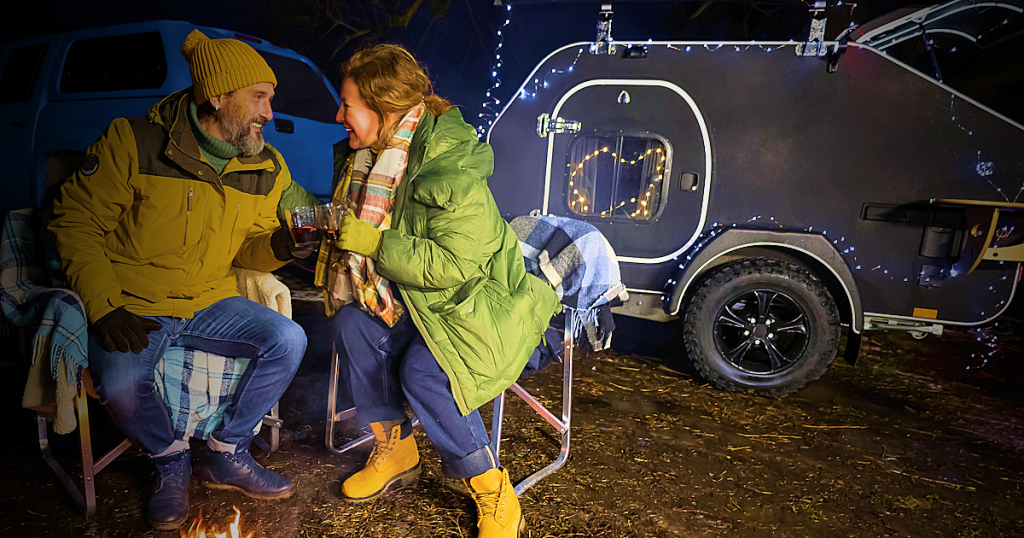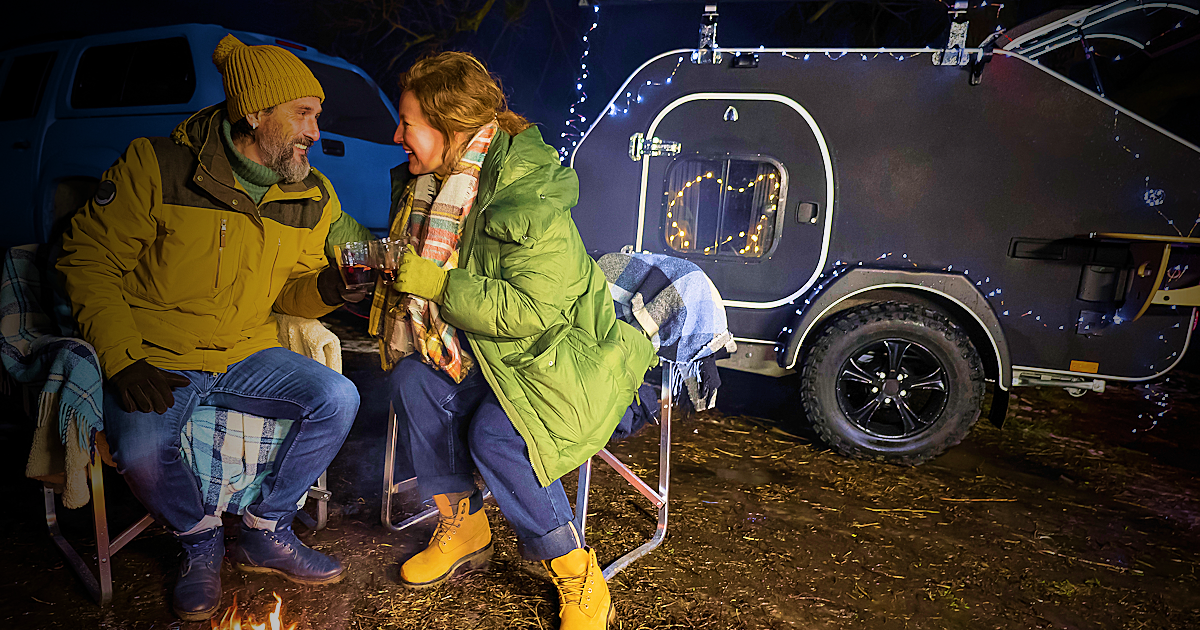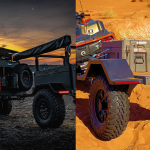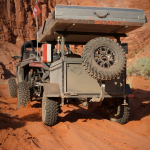Are Teardrop Campers Really for Overlanding?
The overlanding world, the offroad universe and the camping scene have their debates. Most usually revolve around vehicles and which brand is the toughest and best for the trail.
Chest thumping about cars, trucks and rigs is a time-honored American tradition.
But can there be such rivalries when it comes to….trailers?
Well, yeah.
Call it yet another byproduct of the pandemic, if you will, but outdoor adventuring has exploded in recent years and one of the many micro trends has been the booming popularity of teardrop campers.
Teardrops are a throwback of sorts.
These round-ended towable campers surged in popularity post-WWII as returning GIs took to either designing and crafting their own trailers or purchasing a newly available kit that provided materials and plans for someone with the tools and resources to put them together.
They sold so many of these homemade trailer kits that they launched the idea of producing trailers in mass and selling them like cars.
The idea took off like a shot and one of the many iconic images of the 1950s was the family teardrop camper out on the road in search of National Parks.
These days teardrop campers are a vintage idea made modern with everything from solar-powered electronics, remote Internet access and running water.
Teardrops have ridden the wave of glamping, a kind of posh living in the wild, pushed by million-dollar RVs so big they require butlers. Teardrop campers are yet another extension of a very healthy RV industry that has diversified broadly in the past 5 years.

Of course, as was bound to happen, the teardrop-on-steroids idea has emerged with makers pushing teardrop designs with off-road and off-grid vibes.
Some, who for whatever reason disparage these teardrop trends, joke that off-roading in a tear drop is akin to putting a lift kit on a VW (which, of course, has been done quite successfully).
For most, teardrop trailers are sold and used as kind of a tiny glamping alternative. But teardrops have grown up and many resemble armored vehicles seemingly able to withstand nuclear blasts. It’s no longer your Daddy’s teardrop trailer.
But Is it really possible to take these campers on the off-road trail to remote destinations?
Given the explosion in independent makers of off-road campers the answer is clearly yes.
The real question does not lie in their capabilities anymore. It’s more a matter of the overlanding style of choice.
~ Diversity Offroad and Overland ~
“Overlanding style”? What does that mean?
The choices in trailers are much like the choices in overlanding vehicles. Just how extreme do you want to be? What capabilities do you want? What’s your dream of adventure and how it is done?
Think about it: for some, being out there means taking the vehicle, the camper, the trailer and all the stuff literally anywhere. For others, it is more about having all the creature comforts where there are none.
For some it’s the journey, for others it is the destination. Trailers come in every kind for every type of adventurer. Teardrops are just one of many go-anywhere alternatives.
Years ago, we’d never consider crawling with a trailer of any type. Now that’s actually a thing.
We hear it all the time as a trailer-maker ourselves. “I need something bullet-proof. Build me a trailer that can swim through swamps, climb every mountain and can survive my wild-man wanderings.”
Why not extend that to the popular teardrop?
~ Some Realities ~
Teardrop trailers on the trail are going to offer some advantages and disadvantages.
Obviously, for those who do not want to sleep on the ground or climb a ladder to go to bed a tear drop is a clearly happy alternative.
But can it maneuver the rugged trails with a longer wheelbase and boxy rigidity? Can it hold and stow all the stuff? And if you get it stuck, can you get it out?
Take the story told by Brad Litchfield, an Arizona off-roader who bought a rugged teardrop in a compromise with his wife:
“We were not far outside of Page, Arizona spending one of our first nights in our teardrop and thunderstorms came rolling in,” Brad explained. “We felt so smart snugly sheltered in the teardrop in the wet of that night. But the next morning, trying to get out, it was like trying pull an untrailered boat through a sea of snot…”
Brad’s point was that shape, size, weight and other unique features of his teardrop footprint made for unexpected challenges on the trail.
Being an off-road enthusiast, which seems to be code for trouble-seeking sometimes, Brad kind of enjoyed the challenge.
His wife? Not so much. “She stressed a little,” he admitted.
For every story like Brad’s there is another one of overlanding success in a teardrop.
No longer is it dismissible: teardrops can be made with the heavy-duty infrastructure to withstand the trail. The question is more of whether you actually want to take it out there.
~ Teardrop Trailer Things to Think About ~
No matter how big the tires or how extreme the trail, just getting out there in a teardrop is going to present some obstacles versus overlanding trailers:
- Cost – teardrops, with all their options of accessorizing, can be a lot more expensive. Many start around $20,000 and can rise to $80,000 or more – for just the trailer alone.
- Weight – teardrops suffer from weight issues due to construction philosophy. Back in the day they were all-wood and some today still are. Most are using fiberglass now, a strong and lightweight alternative. Either way, heavy or light, there are huge adjustments to be made in handling on the road and the off-road trail. How the weight is managed makes the decision of what kind of vehicle to tow it with all the more important as well.
- Maneuverability – any rig with a teardrop, no matter how small, is going to have a tougher time in tight spaces and in slick conditions such as snow and mud. Just a fact.
- Maintenance — While bigger overland trailers offer their level of comfort, your trailer components become increasingly complex and more costly. This could include axles, trailer brakes, electrical systems, even hitches.
- Recovery — Traditional overland trailers are not only designed for the rugged trails their smaller footprint make moving them even by hand possible. A loaded teardrop cannot be handled in that way.
Naturally, as a manufacturer of overlanding and off-road trailers we have our opinion of the right way to go.
But we’re not going to get down in the mud with those critical of teardrop trailer overlanding. A marketplace with broad choices is always a good thing.
Making the right choice for your trailering preference is one that just takes a lot of research, a great deal of conversing with others, and smart hands-on shopping.
See posts like this in your email. Subscribe today!





Leave a Reply
Want to join the discussion?Feel free to contribute!